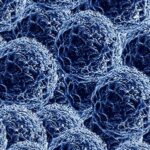New Study Warns of Tie Between Nanoparticles & Autoimmune Diseases

Nanoparticles are microscopic particles that are between one to 100 nanometres in diameter, thickness or total size. These incredibly small particles are used in products such as fabric, electronics, cosmetics, eyeglass coating, cleaning supplies and paint.
But although the size of nanoparticles is what makes them so useful, it’s also what makes them potentially hazardous to the health of workers who handle or work with them.
In fact, a new study by scientists at Trinity College Dublin has found that exposure to nanoparticles can have a serious impact on health, linking it to rheumatoid arthritis and the development of other serious autoimmune diseases. These findings have health and safety implications for the manufacture, use and ultimate disposal of products and materials made using nanotechnology.
The researchers investigated whether there was a common underlying mechanism contributing to the development of autoimmune diseases following exposure to a wide range of nanoparticles containing different physical and chemical properties, including:
- Ultrafine carbon black
- Carbon nanotubes
- Silicon dioxide particles of different sizes.
At the same time, collaborating researchers from NIOSH conducted studies in mice exposed to chronic inhalation of air contaminated with single walled carbon nanotubes.
The result was clear and convincing: All types of nanoparticles in both the Dublin and US study caused an identical response in human cells and in the lungs of mice, transforming the amino acid arginine into citrulline.
In the transformation to citrulline, human proteins can no longer function properly and are subject to destruction and elimination by the body’s defence system. Once programmed to get rid of citrullinated proteins, the immune system can start attacking its own tissues and organs, thus causing the autoimmune processes that may result in rheumatoid arthritis.
The paper was published in the journal Nanomedicine under the title, “Citrullination of proteins: a common post-translational modification pathway induced by different nanoparticles in vitro and in vivo.”
The OHS Insider has more information on the hazards posed by nanoparticles as well as how they’re regulated under OHS law.